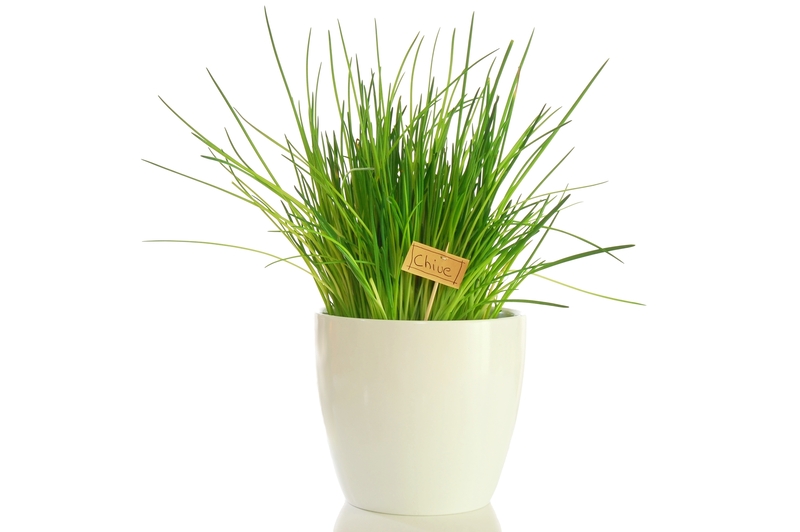Cultivating Orchids: A Comprehensive Guide
Posted on 20/06/2025
Cultivating Orchids: A Comprehensive Guide
Orchids are among the most beautiful and diverse flowers in the world, captivating plant lovers with their exquisite blooms and remarkable variety. If you've ever dreamed of cultivating orchids at home, you're not alone! While these elegant flowers may have a reputation for being challenging, growing orchids can be an incredibly rewarding and accessible hobby.
This thorough, Google-friendly guide will dive into everything you need to know about orchid cultivation--covering types, care, propagation, and solutions to common problems. Whether you're a complete beginner or a seasoned horticulturist, this guide aims to empower you to successfully nurture and enjoy your own orchids.
Understanding Orchids: Nature's Masterpieces
Orchids belong to the Orchidaceae family, which is one of the largest and most diverse plant families on Earth, encompassing over 25,000 species and over 100,000 hybrids. These fascinating plants are found in almost every region worldwide, from steamy tropical rainforests to alpine meadows.
Orchid Growth Habits
- Epiphytic Orchids - These grow on other plants (usually trees), absorbing moisture and nutrients from the air and rain.
- Terrestrial Orchids - These varieties grow in the ground, often in leaf litter in humid forests.
- Lithophytic Orchids - These types grow on rocks or in very little soil, adapting to harsh environments.
Understanding your orchid's natural habitat is essential to cultivating orchids successfully at home.

Popular Types of Orchids for Home Cultivation
While there are thousands of varieties, several orchid species are especially suited for home gardeners:
- Phalaenopsis (Moth Orchid): The most popular and beginner-friendly, known for long-lasting, elegant blooms.
- Cattleya: Famous for their large, fragrant flowers, often seen in corsages.
- Dendrobium: Versatile and robust, these orchids produce stunning clusters of blooms.
- Oncidium (Dancing Lady): Recognized by their petite, striking flowers and prolific blooming.
- Vanda: Renowned for vibrant colors and require more light and humidity.
Choosing the Right Orchid for Your Environment
Consider your local climate, available light, and your willingness to meet your orchid's needs before choosing which variety to cultivate. Phalaenopsis and Dendrobium are generally best for beginners, while Cattleyas and Vandas may be more rewarding for experienced growers.
Essential Orchid Growing Conditions
To successfully cultivate orchids at home, you must replicate their native conditions. Here's what every orchid grower needs to know:
1. Light Requirements for Orchids
- Most orchids prefer bright but indirect light. Too much direct sunlight can scorch their leaves, while too little can prevent blooming.
- Phalaenopsis and Paphiopedilum thrive in low to moderate light (east- or north-facing windows).
- Cattleya, Dendrobium, and Vanda prefer high to very bright light (south- or west-facing windows, maybe filtered).
- Artificial grow lights can supplement natural light, especially in winter or for windowless rooms.
2. Temperature and Humidity
- Daytime temperatures: Most orchids thrive in ranges of 65-80?F (18-27?C).
- Nighttime temperatures: Slightly cooler, around 55-65?F (13-18?C).
- Humidity: Orchids love higher humidity--ideally 40-70%. Use a humidity tray, room humidifier, or cluster orchids together to improve humidity.
3. Air Circulation
Good air movement prevents fungal diseases and encourages healthy root growth. An overhead fan set to low, or simply opening a window daily, can help provide necessary airflow for your orchid plants.
4. Watering: Striking the Right Balance
Water is both crucial and tricky in orchid cultivation. Overwatering is the most common mistake made by beginners:
- Soak the orchid's potting medium thoroughly, allowing excess to drain out. Let the medium dry slightly before watering again.
- Frequency depends on type, potting medium, and environmental conditions--typically every 5-10 days.
- Avoid letting roots stand in water, which can cause rot.
- Use room-temperature, non-softened water--rainwater is ideal.
Pro tip: Wrinkled leaves generally mean under-watering, while yellow, mushy roots often mean over-watering.
5. Choosing the Perfect Potting Medium
Unlike regular houseplants, orchids rarely grow in soil. They need a special orchid mix that allows excellent drainage and air movement:
- Bark mixes: Most popular, mimic natural growing conditions for epiphytic orchids.
- Sphagnum moss: Retains more moisture, ideal for young plants or dry climates.
- Charcoal, perlite, and coconut husk chips are often added for extra aeration and water management.
Repot your orchids every 1-2 years to refresh the medium and encourage healthy roots.
6. Fertilizing Your Orchids
"Feed weakly, weekly" is a common mantra among orchid enthusiasts:
- Use a balanced orchid fertilizer diluted to half or quarter strength.
- Fertilize every 2-4 weeks during active growth.
- Rinse the potting medium periodically to prevent salt buildup from fertilizer.
Orchid Propagation Techniques
Ready to expand your orchid collection? There are several ways to propagate orchids at home:
1. Division
Suitable for mature, multi-stem orchids such as Cattleya, Oncidium, and Dendrobium.
- Remove the plant from its pot and gently separate the rhizomes, ensuring each division has at least 3-4 healthy pseudobulbs and roots.
- Repot each new section in fresh medium.
- Water sparingly until new growth appears.
2. Keiki (Baby Plant) Growth
Some orchids, especially Dendrobium and Phalaenopsis, naturally produce "keikis"--baby plants on flower stems:
- Wait until the keiki forms roots about 2-3 inches long.
- Snip the keiki from the parent with sterilized scissors and pot it separately.
3. Seed Propagation
While possible, orchid seeds require sterile conditions and specialized care. This method is mostly pursued by advanced growers or breeders.
Common Orchid Problems and Solutions
1. Orchid Pests
- Aphids, mealybugs, and scale: Use insecticidal soap or wipe leaves gently with rubbing alcohol.
- Spider mites: Increase humidity and use appropriate miticides.
- Fungus gnats: Let the potting mix dry between waterings; use sticky traps.
2. Orchid Diseases
- Root rot: Usually caused by overwatering; remove affected roots and repot.
- Leaf spots (fungal/bacterial): Remove infected areas, ensure good ventilation, and treat with fungicide if needed.
- Viral infections: Unfortunately incurable--destroy affected plants to prevent spreading.
3. Failure to Bloom
- Insufficient light is the top reason for orchids failing to flower.
- Lack of temperature fluctuation--many orchids need a drop in nighttime temperature to trigger blooming.
- Over- or under-fertilizing, or allowing roots to become cramped or pot-bound.
Be patient--some orchids bloom once or twice a year, lasting for months!
Repotting and Pruning Orchids
As part of regular orchid maintenance, repotting is essential. Repot orchids every 12-24 months, or when the potting mix breaks down or becomes compacted.
How to Repot an Orchid:
- Cautiously remove the orchid from its pot and gently shake off old medium.
- Trim off dead or rotting roots with sterilized scissors.
- Place the orchid in a slightly larger pot with fresh orchid mix.
- Water lightly and keep out of direct sun initially.
Pruning spent flower spikes encourages new blooms and keeps the plant tidy. For monopodial orchids (like Phalaenopsis), cut above a node to stimulate branching. In sympodial types (Cattleya, Dendrobium), remove the spike at the base.
Special Care Tips for Thriving Orchids
- Clean leaves occasionally with a damp cloth to maximize photosynthesis and check for pests.
- Rotate your orchids every couple of weeks for even growth.
- Avoid using ice cubes for watering; instead, soak the medium thoroughly as described above.
- Keep an orchid care log to track watering, feeding, and blooming cycles.
- Add a humidity tray filled with pebbles and water under your pots for healthy moisture levels.
Frequently Asked Questions About Growing Orchids
-
How long do orchid flowers last?
Most orchid blooms last from 6-12 weeks, depending on the species and care. -
Why are my orchid leaves turning yellow?
This can indicate overwatering, aging leaves, or sudden temperature changes. -
Can orchids grow outdoors?
Some types can thrive outside in warm, humid climates but must be protected from direct sun and frost. -
Will my orchid re-bloom?
Yes! With proper care and a rest period, most orchids will bloom year after year.

Best Resources for Orchid Enthusiasts
Joining an orchid society or online community is a fantastic way to learn. Here are some additional resources:
- American Orchid Society
- Royal Horticultural Society - Orchid Page
- Local botanical gardens and orchid shows
- Social media groups and forums devoted to orchid care
Conclusion: The Joy of Cultivating Orchids
The journey of cultivating orchids is filled with learning, perseverance, and immense beauty. From selecting the right species, understanding their unique needs, and mastering their care to enjoying stunning blooms, orchid growing is an endlessly fascinating hobby.
If you apply the essentials from this guide--light, water, temperature, humidity, and patience--you'll be on your way to successful orchid cultivation and a home filled with natural elegance. Celebrate each new bloom and continue expanding your knowledge; orchids reward care and curiosity with breathtaking displays season after season!



